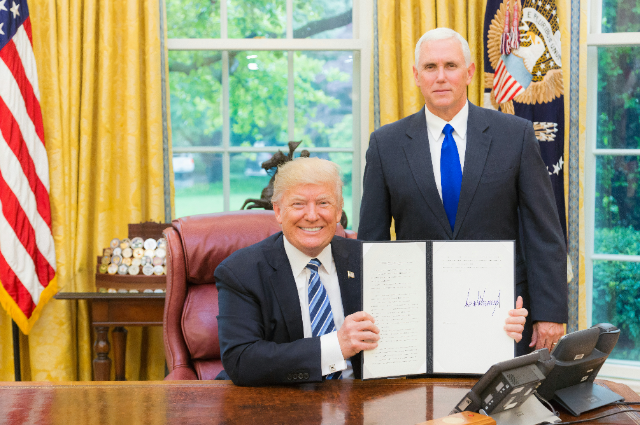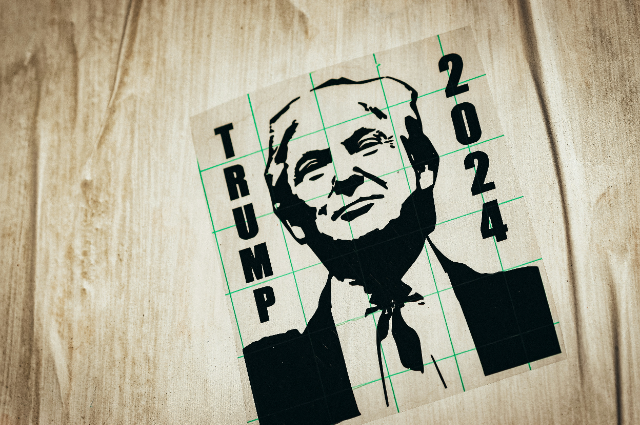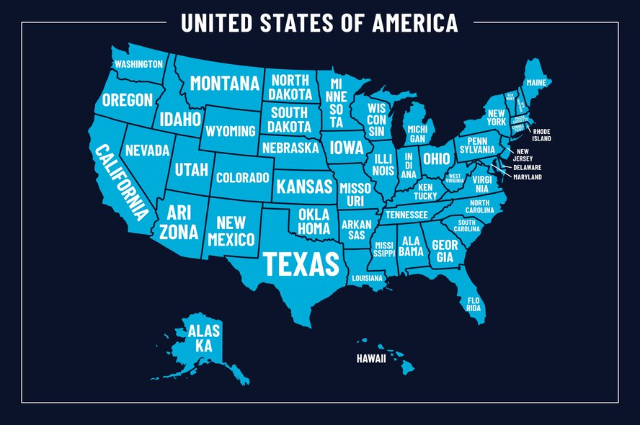
Photo by History in HD on Unsplash
Introduction
Donald Trump’s recent victory in the presidential election in the United States marks a significant moment that presents both new opportunities and challenges for Indian diplomacy. The implications of this election extend far beyond the borders of the US, influencing various global issues and reshaping international relations. This article will delve into numerous questions about whether Trump's tenure 2.0 will bring benefit to the Indian economy and world geopolitics or not. It will also answer questions on whether is it really true as the famous saying goes that, “When US sneezes then the whole world catches cold?”
The Implications of Donald Trump's Return: Global Reactions and India's Balancing Act
The resounding electoral victory of Donald Trump known for his uncompromising style and troublesome policies both at home and abroad has triggered unease across the globe. His potential return to the White House raises critical questions for allies and adversaries similar to reshaping the global geopolitical landscape.
Concerns from Europe and Asia
European nations are worried about Trump’s stance on security and trade. There are fears that he might weaken support for Ukraine in its conflict with Russia by potentially leaving the continent vulnerable to Moscow's assertive nationalism. Additionally, his previous tendencies to impose high tariffs on European goods have revived concerns about economic strain.
In Asia, China fears the possibility of another Trump-era trade war which strained relations during his first term. Meanwhile, America’s Asian allies such as Japan and South Korea may face increased demands to contribute more financially in exchange for continued U.S. military support, particularly in countering China's expansionist policies in the Indo-Pacific.
Russia, Ukraine, and India's Unique Position
Russia and Ukraine have contrasting expectations regarding Trump’s foreign policy. Both nations speculate that he might push for an expedited resolution to their ongoing war, though the outcome is likely to favour one side over the other. A potential relaxing of Western sanctions on Russia under Trump’s leadership would be a welcome development for India. Since Russia invaded Ukraine in early 2022, India has significantly deepened its trade ties with Moscow.
Unlike many countries, India views a second Trump presidency without anxiety, given the warm relationship between Trump and Indian Prime Minister Narendra Modi. However, personal camaraderie alone cannot guarantee stronger Indo-U.S. ties. Both leaders have demonstrated a transactional approach to diplomacy with Trump’s "America First" philosophy often clashing with India's priorities.
Trade Challenges and Strategic Expectations
Trump has previously criticized India for its high tariffs and ended India’s preferential trade status during his first term. He also disapproved of India's purchase of Russia's S-400 missile system by emphasizing that economically prosperous states make the best allies. Trump regarded Southeast Asia, particularly Vietnam and ASEAN nations as central to the Indo-Pacific strategy by potentially sidelining India in his future policy framework. For Trump, economic strength remains a key criterion for partnerships. While India holds a significant geostrategic position in the Indo-Pacific, it may not feature as a top priority unless it aligns more closely with U.S. goals to counter China.
The Complex Dynamics of Indo-U.S. Relations
India-U.S. relations have matured considerably since the landmark civilian nuclear deal of 2006, yet differences in economic and strategic priorities persist. Trump’s first term witnessed the revival of the Quad in 2017 and the establishment of the Indo-Pacific as a security framework. However, India and the U.S. have varying interpretations of the region’s geographical and strategic scope even as they jointly advocate for a rules-based international order.
Under a potential second Trump administration, these differences could resurface. While both nations share an interest in curbing China's growing influence and Trump’s focus will likely shift to assessing what India can offer in countering Beijing’s dominance, especially in economic and military terms.
India and the U.S. have made significant strides in their partnership, but challenges remain. A Trump 2.0 administration is likely to bring a mix of continuity and conflict to the relationship. While shared interests in the Indo-Pacific could deepen cooperation, the transactional nature of Trump’s policies may test the resilience of their strategic partnership. India must prepare to navigate this complex dynamic by balancing its national interests with the demands of an increasingly polarized global order.
In 2016, the Trump administration recognized India as a "major defense partner," which significantly enhanced the defense relationship between the two nations. However, India has not fully embraced the role of an American ally. This hesitance stems from two main factors: India’s own reluctance to align too closely with the U.S. and the United States' apprehension about engaging deeply with a country that has ongoing border disputes with both Pakistan to the west and China to the east. China has rapidly increased its influence in the Indian Ocean by complicating matters further.
Economic Disparities and Strategic Interests
In 2015, China's GDP per capita was approximately $8,016, and it has since risen to nearly $13,000. In contrast, India’s figures were much lower, starting at $1,590 in 2015 and climbing to just under $2,500 today. This economic disparity highlights India's need for a strategic partnership with the U.S. to help manage China's growing assertiveness in regions like the South China Sea. China's territorial claims threaten not only American allies such as the Philippines and Japan but also encroach upon India's northeastern territories. Therefore, addressing China's expansionism remains a crucial aspect of U.S.-India relations.
Navigating Bilateral Solutions
Both former President Trump and current President Biden have shown a preference for bilateral solutions to address the longstanding Sino-Indian border dispute. This approach is essential for India to consider as it seeks to navigate its complex relationship with China while maintaining ties with the U.S.
Trade Relations and Economic Challenges

Image by hectorgalarza from Pixabay
Job creation in the U.S. and balancing trade deficits will be significant priorities for any future administration, potentially leading to resistance from India. For instance, Trump’s second term would likely demand greater reciprocity regarding technology transfers between the two countries.
Both India and America face substantial trade deficits. Prime Minister Modi's "Make in India" initiative was viewed by Trump as protectionist, conflicting with his goals for American manufacturing and exports. As a result, Trump revoked India's trade privileges, prompting retaliatory tariffs from India on several American goods. These unresolved trade tensions raise questions about India's ability to leverage initiatives aimed at expanding technology transfers.
The Southeast Asian Landscape
Trump encouraged India to boost its investments in Southeast Asia; however, he may not have fully grasped that many Southeast Asian nations have stronger economic ties with China than with India. India's diminishing economic footprint in this region is evident in its absence from the Regional Comprehensive Economic Partnership (RCEP), a major free trade agreement that India opted out of due to concerns about China's dominance. This decision has inadvertently boosted China's economic influence in the Indo-Pacific region. Moreover, Trump is likely to confront Indian leaders about foreign investors withdrawing from India and returning to China by highlighting the challenges India faces in attracting international investment.
The relationship between India and the United States is complex and many-sided, influenced by economic interests, strategic considerations, and regional dynamics. As both nations navigate these challenges, it will be crucial for India to balance its ambitions while addressing external pressures from both China and its relationship with the U.S.
Trump's Return to the White House: A New Chapter for America?

Photo by Jon Tyson on Unsplash
The political comeback of Donald Trump as the 47th President of the United States in 2024 has drawn comparisons to literary stories, particularly W.B. Yeats’s The Second Coming. This analogy hints at a sense of sinister, echoing the poem's themes of chaos and transformation in the aftermath of war. In a similar manner, Trump’s rise reflects an era of political turmoil, fueled by Republican narratives that struck a deep harmony with American voters. The party’s portrayal of this election as a decisive moment—perhaps even the last chance to "save" America—proved to be more persuasive than Democratic warnings about Trump’s perceived threat to democracy.
Trump’s campaign capitalized on a mix of urgent themes. Central to this was the promise to defend America against what he described as ‘woke ideologies’ insightful towards the military and broader institutions. Paired with a focus on combating the real effects of inflation, this message resonated strongly with a voter base grappling with economic insecurities and cultural anxieties. While the Democrats attempted to frame Trump as a danger to democratic norms, the Republican narrative tapped into fears of national decline and the desire for decisive action to restore stability.
This strategy not only secured Trump a historic victory in both the Electoral College and the popular vote but also signaled a significant ideological shift within the American political landscape. For many voters, the Republican vision of reclaiming national strength and identity appeared more compelling than the Democrats’ warnings about potential authoritarianism.
A New Domestic and Global Focus
Trump’s return to power could signify transformative changes across multiple dimensions of American governance. One of the administration's key priorities appears to be a recalibration of the federal government’s focus. By emphasizing domestic concerns, such as economic growth and institutional reform, the Trump administration may seek to reduce its engagement in international entanglements and shift resources back to home soil.
This inward turn could lead to substantial restructuring within the political, bureaucratic, and financial systems of the United States. With promises of reform, Trump 2.0 aims to streamline government operations, address perceived inefficiencies and realign policies to better serve domestic priorities. Internationally, this could mean a more selective and transactional approach to foreign relations, driven by domestic essentials rather than broad global ambitions.
The Road Ahead
As Trump’s second presidency begins, the nation stands at a crossroads. Will this new era bring about the revitalization and unity promised by the campaign, or will it deepen divisions in an already polarized society? The focus on domestic revival could reshape not only the American political identity but also its role on the world stage. For better or worse, Trump’s return has accompanied in a period of significant change with implications that will resound far beyond U.S. borders.
In this transformative moment, the eyes of the world are once again fixed on America, waiting to see how it navigates the challenges and opportunities of this new chapter.
Domestic and Global Implications
Trump's win has substantial consequences for both domestic policies in the US and international affairs. The new administration is expected to have a profound effect on critical areas such as climate change, trade, and technology. How Trump navigates these issues will not only impact the United States but also have repercussions for its allies, including India. This raises an important question: what can India anticipate from this new political landscape?
In the economic realm, India may encounter some turbulence. Trump's agenda focuses on reforming and revitalizing the US economy which may involve implementing trade measures that could affect India’s interests. His administration is likely to employ tactics such as tariffs and market access commitments to reshape trade relationships in favour of the United States. During his first term, trade tensions between India and the US were evident and it is anticipated that Trump will continue to leverage tariffs as a means to influence bilateral trade dynamics.
Moreover, Trump is expected to prioritize adherence to World Trade Organization (WTO) rules selectively, showing little patience for countries that utilize the WTO's dispute resolution mechanisms. This approach necessitates that the Indian government adopts a more proactive and agile stance in addressing trade issues if faced with such coercive strategies.
Opportunities for Growth
Despite these challenges, there are also promising opportunities for India. The bilateral trade between India and the US currently stands at approximately $200 billion annually with potential for growth as both nations seek to expand investment opportunities. The ongoing realignment of global supply chains may further strengthen ties between India and the US by creating a more interconnected economic relationship. Additionally, India's rising middle class presents a unique opportunity to engage with American markets. As this demographic continues to grow, their demand for American goods and services will likely increase by providing India with leverage in its economic dealings with the US.
While challenges look on the horizon due to Trump's presidency, there are also avenues for collaboration and growth between India and the United States. As one of India's most crucial economic partners, the US will play a vital role in shaping India's future in technology and trade.
Navigating the Potential Impacts of USD-INR Trends: A Detailed Description for Investors

As global economic trends shift, the USD-INR exchange rate, bond yields, sectoral performance, and commodity markets stand out as crucial indicators for Indian investors. Understanding these elements and their interconnected effects is essential for navigating the financial landscape in the months ahead. Below, we explore these areas in detail by important key implications and opportunities for Indian investors.
1. USD-INR Exchange Rate: A Double-Edged Sword
The strength of the US dollar relative to the Indian rupee has significant implications for India's economy. Historically, policies under leaders like Trump have prioritized domestic growth through tax cuts and protectionist trade measures which can strengthen the dollar against emerging market currencies.
- Impact on Imports and Inflation
A stronger dollar increases the cost of imports for India, driving up inflationary pressures. For industries reliant on imported goods or raw materials such as oil or electronics, this could squeeze margins and raise consumer prices.
- Export Opportunities
Conversely, Indian exporters stand to benefit from a strong dollar as it makes their goods more competitively priced in global markets. This could provide a much-needed boost to sectors like textiles, IT services, and pharmaceuticals.
- Investor Takeaway
Keeping a close watch on currency fluctuations is vital as these can trigger ripple effects across multiple industries. A balanced portfolio with exposure to both export-driven and domestic-focused sectors can help mitigate risks.
2. Bond Yields and FII Flows: The Tug-of-War in Capital Markets
Pro-business policies in the U.S.A, combined with increased fiscal spending are likely to push U.S. bond yields higher. This could reshape global investment patterns with significant implications for India.
- Capital Flow Dynamics
Higher U.S. bond yields offer attractive returns, potentially pulling foreign institutional investments (FIIs) away from Indian equities and bonds. Reduced FII inflows could lead to volatility in Indian financial markets, impacting equity valuations and bond yields.
- Impact on Indian Borrowing Costs
As global borrowing costs rise, Indian banks and non-banking financial companies (NBFCs) might face increased pressure. This could affect lending rates and corporate borrowing, especially for infrastructure and capital-intensive industries.
- Investor Takeaway
Investors should prepare for short-term volatility and assess the impact of reduced FII flows on specific sectors. Diversifying into strong industries with domestic growth potential can provide stability.
3. Sectoral Winners and Losers: The Post-Trump Policy Landscape
While some sectors may thrive under the new policy regime, others could face challenges. Let’s analyze key industries in detail.
- IT Services
India's IT sector could benefit as "America First" policies lead to trade tensions with China. With U.S. companies seeking alternative outsourcing hubs, Indian IT firms could see increased demand.
- Pharmaceuticals
Price caps on essential medicines might slightly reduce profit margins for Indian pharmaceutical companies. However, overall demand and supply dynamics are expected to remain steady by ensuring continued growth opportunities.
- Metals Sector
A focus on U.S. manufacturing and infrastructure spending could increase global metal prices. Indian metal producers may benefit, particularly if tariffs on China redirect demand towards India.
Sectors Facing Challenges
- Financial Services
Reduced FII inflows due to higher U.S. bond yields might affect liquidity in the Indian market. Additionally, rising global borrowing costs could increase the financial burden on Indian banks and NBFCs. However, robust India-U.S. trade relations could provide some cushion.
- Infrastructure and Real Estate
Rising global material prices may increase construction costs in India, potentially slowing down domestic infrastructure projects. On the flip side, a stronger dollar could encourage non-resident Indians (NRIs) to invest in Indian real estate, leveraging favorable exchange rates.
- Investor Takeaway
Sector-specific strategies are key to maximizing returns. While export-oriented industries like IT and metals may offer growth opportunities, domestic sectors dependent on imports or foreign funding should be approached cautiously.
4. Commodities: A Global Ripple Effect
The commodity market is another area that will see change. Increased U.S. infrastructure spending could raise demand for key materials like steel and aluminum, pushing up prices globally. For Indian commodity exporters, this trend could translate into improved profitability. However, higher global prices might strain domestic industries reliant on imported raw materials.
- Investor Takeaway
Investors should consider adding exposure to Indian metal producers and export-oriented commodities while remaining cautious about industries heavily dependent on imports. The evolving global economic scenario, influenced by U.S. policies and their effects on the USD-INR exchange rate, bond yields, and sectoral performance, presents both challenges and opportunities for Indian investors. Staying informed about these trends and strategically positioning investments across strong sectors can help navigate volatility and capitalize on emerging opportunities. The key lies in maintaining a diversified portfolio and keeping an eye on global and domestic policy developments.
Conclusion
India must prepare for potential challenges regarding immigration in the context of its relationship with the United States. Under Trump's administration, there was a strong emphasis on economic issues, particularly inflation and wages alongside immigration policies. There is a widespread agreement among U.S. lawmakers to shift away from the more lenient immigration policies of the Biden era, which have contributed to significant illegal immigration and stirred public discontent.
India plays a notable role in legal immigration to the U.S., primarily through the H-1B visa program, which allows skilled workers to enter the country. While there is hope that these immigration levels will remain steady, the future is uncertain. To address this, India may need to articulate how Indian immigrants who are often highly skilled, positively impact the U.S. economy and enhance bilateral ties.
Immigration could emerge as a contentious issue in U.S.-India relations. Given that India’s partnership with the U.S. is crucial for its diplomatic efforts, economic growth, and strategic positioning in the Indo-Pacific region, navigating this landscape will be essential. Trump's presidency presents both opportunities to build on the progress made over the past two decades and challenges that require careful management to ensure a stable and productive relationship moving forward.
. . .
References:

